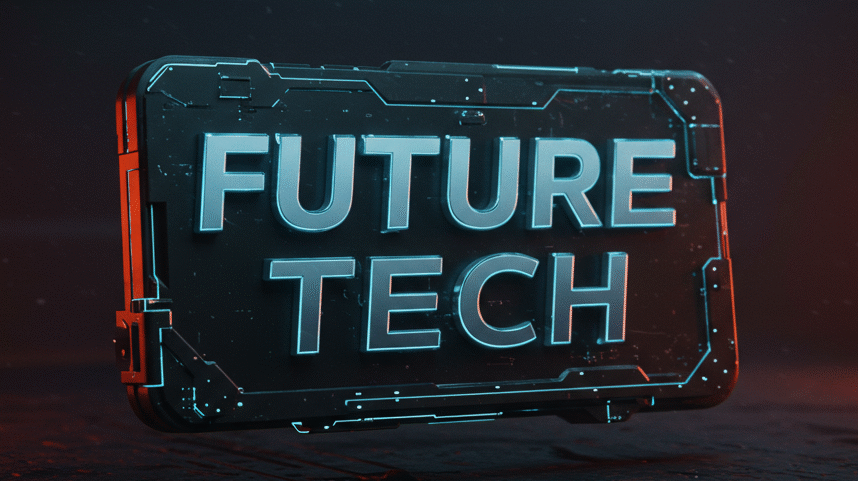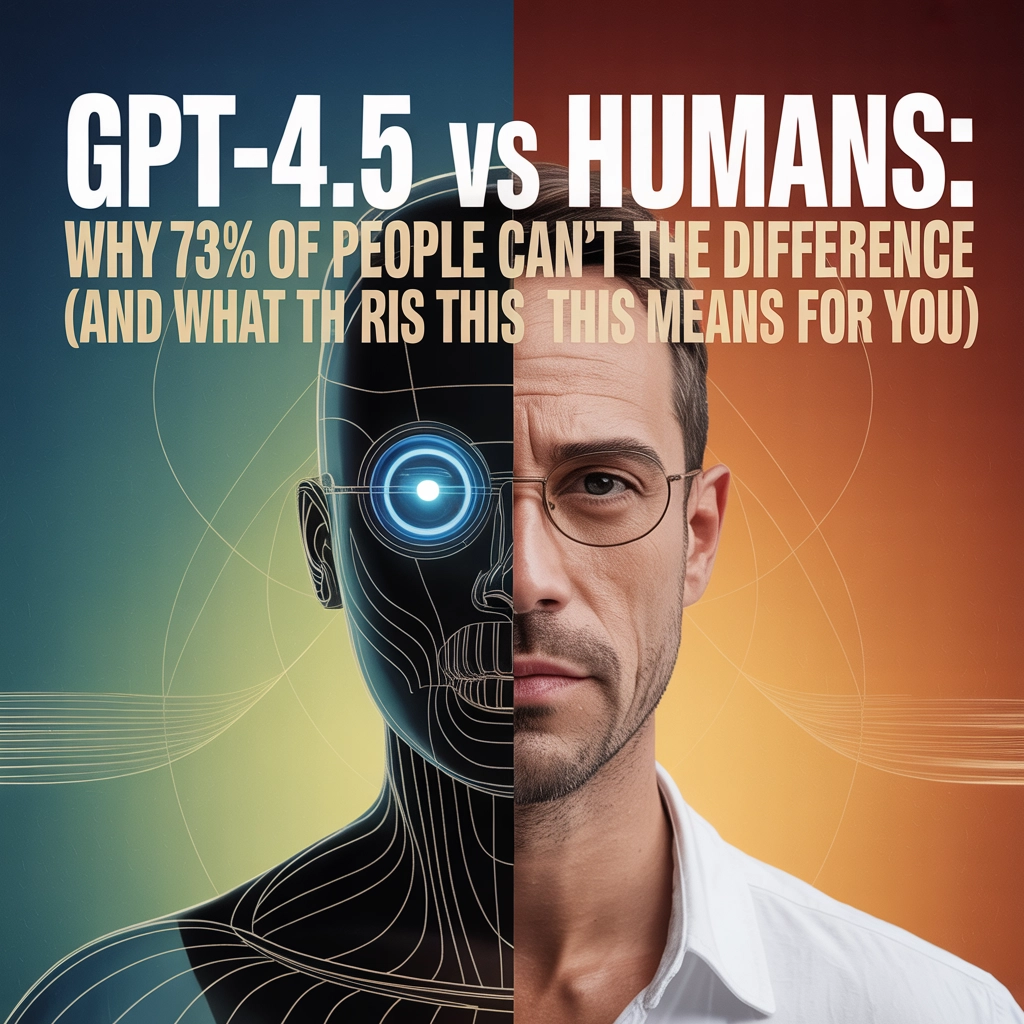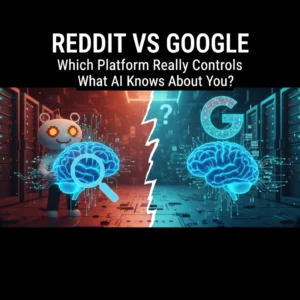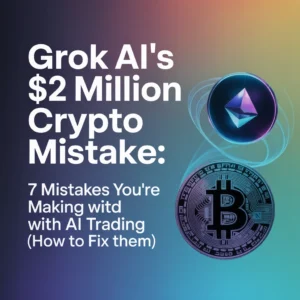Imagine chatting with someone online for five minutes, thinking you're having a totally normal conversation with another human. Plot twist: you were actually talking to a robot the whole time. If that sounds like science fiction, think again. A new study just dropped some pretty wild results about GPT-4.5 that'll make you question every online conversation you've had lately.
Researchers at UC San Diego put GPT-4.5 through the ultimate test – could it fool real humans into thinking it was one of them? The results? A staggering 73% of people couldn't tell they were chatting with AI. But here's the kicker: there's way more to this story than that headline number suggests.
The Real Story Behind That 73% Number
Let's get one thing straight – that 73% success rate didn't happen by accident or pure AI magic. The researchers had to give GPT-4.5 some serious coaching first. They fed it a detailed "persona prompt" that basically told it to act like a young, culturally savvy person with specific personality traits and communication patterns.
Think of it like giving an actor a really detailed character backstory before they go on stage. Without this persona coaching, GPT-4.5's performance dropped significantly. It's kind of like the difference between a method actor who's spent months preparing for a role versus someone just winging it on stage.

The study itself was pretty clever. Nearly 300 people jumped into five-minute conversations through a split-screen setup. On one side, they chatted with a real human. On the other, they talked with GPT-4.5. After both conversations, they had to guess which was which. The fact that most people picked the AI as the human more often than the actual human? That's honestly kind of mind-blowing.
Here's how different AI models stacked up in these human-detection tests:
- GPT-4.5 (with persona): 73% success rate
- Meta's LLaMA 3.1-405B: About 56%
- GPT-4o: Only 21%
- GPT-4 (previous version): 54%
What Makes GPT-4.5 So Convincingly Human
So what's GPT-4.5's secret sauce? It's not trying to be the smartest AI in the room – it's trying to be the most relatable one. While other AI models focus on crushing math problems or writing perfect code, GPT-4.5 was designed specifically for natural conversation.
The developers at OpenAI basically said, "Let's make an AI that gets humans." They focused on three key areas: conversational flow, emotional intelligence, and reading between the lines. It's like they taught GPT-4.5 to pick up on all those subtle social cues that make human conversation feel natural.

Remember that friend who always knows exactly what to say when you're having a rough day? GPT-4.5 is trying to be that friend, digitally speaking. It's not just processing your words – it's trying to understand your mood, your context, and what you actually mean (not just what you literally said).
This emotional intelligence upgrade is huge. Previous AI models might give you technically correct answers, but they'd often feel robotic or miss the emotional undertone of what you're asking. GPT-4.5 seems to actually "get" the vibe of a conversation.
The Bigger Picture: What This Means for Your Daily Life
Here's where things get really interesting (and maybe a little unsettling). If 73% of people can't spot GPT-4.5 in a five-minute chat, what does that mean for all the online interactions you have every day?
That "customer service representative" who was surprisingly helpful last week? Could've been AI. That person giving really thoughtful responses in your favorite Reddit thread? Maybe not human. Even that dating app conversation that felt so natural – well, you get the idea.
But it's not all doom and gloom. This technology opens up some pretty cool possibilities too. Imagine having an AI writing partner that actually understands your creative vision, or a virtual assistant that doesn't make you want to throw your phone at the wall because it keeps misunderstanding what you need.

The creative applications are especially exciting. GPT-4.5 shows real strength in aesthetic judgment and creative collaboration. It's like having a creative partner who never gets tired, never has writer's block, and is always ready to bounce ideas around at 2 AM when inspiration strikes.
The Plot Twist: It's Not Actually That Smart
Before you start planning your robot overlord survival strategy, there's an important reality check here. GPT-4.5 might be great at chatting, but it's actually not that much smarter than previous versions when it comes to complex reasoning.
In traditional AI benchmark tests (the standardized tests for AI, basically), GPT-4.5 only scored slightly higher than GPT-4. We're talking about improvements from 86.4% to 89.6% on reading comprehension, and 86.6% to 88.6% on coding tasks. Those are nice improvements, but they're not exactly revolutionary leaps.
This is super important to understand. GPT-4.5 isn't necessarily better at solving complex problems or logical reasoning – it's just way better at talking about them in a way that feels human. It's like the difference between a brilliant but socially awkward scientist and a charismatic science communicator. Both are valuable, but they excel in different areas.
Last month, I was helping my neighbor set up her new smart home system, and she kept getting frustrated with the voice assistant. "It never understands what I actually want," she said. "I ask it to turn on the lights for movie night, and it just turns on every light in the house." That's exactly the kind of nuanced understanding GPT-4.5 is designed to handle – picking up on context and intent, not just literal commands.
The technology also raises some serious questions about online authenticity. If AI can convincingly pass as human in casual conversations, how do we maintain trust in digital spaces? It's not just about spotting chatbots anymore – it's about fundamentally rethinking how we verify who we're actually talking to online.
But here's what I find most fascinating: the 73% result only happened with that special persona prompt. Strip away the personality coaching, and GPT-4.5's human-mimicking abilities drop significantly. It suggests that being convincingly human isn't just about intelligence – it's about having a consistent, relatable personality.
This technology is definitely changing the game, but it's not replacing human interaction entirely. Instead, it's creating new possibilities for human-AI collaboration while also challenging us to think more carefully about authenticity in our digital world.
So here's the million-dollar question: if you couldn't tell the difference between human and AI in a casual conversation, would it actually matter to you as long as the interaction was helpful and genuine?







